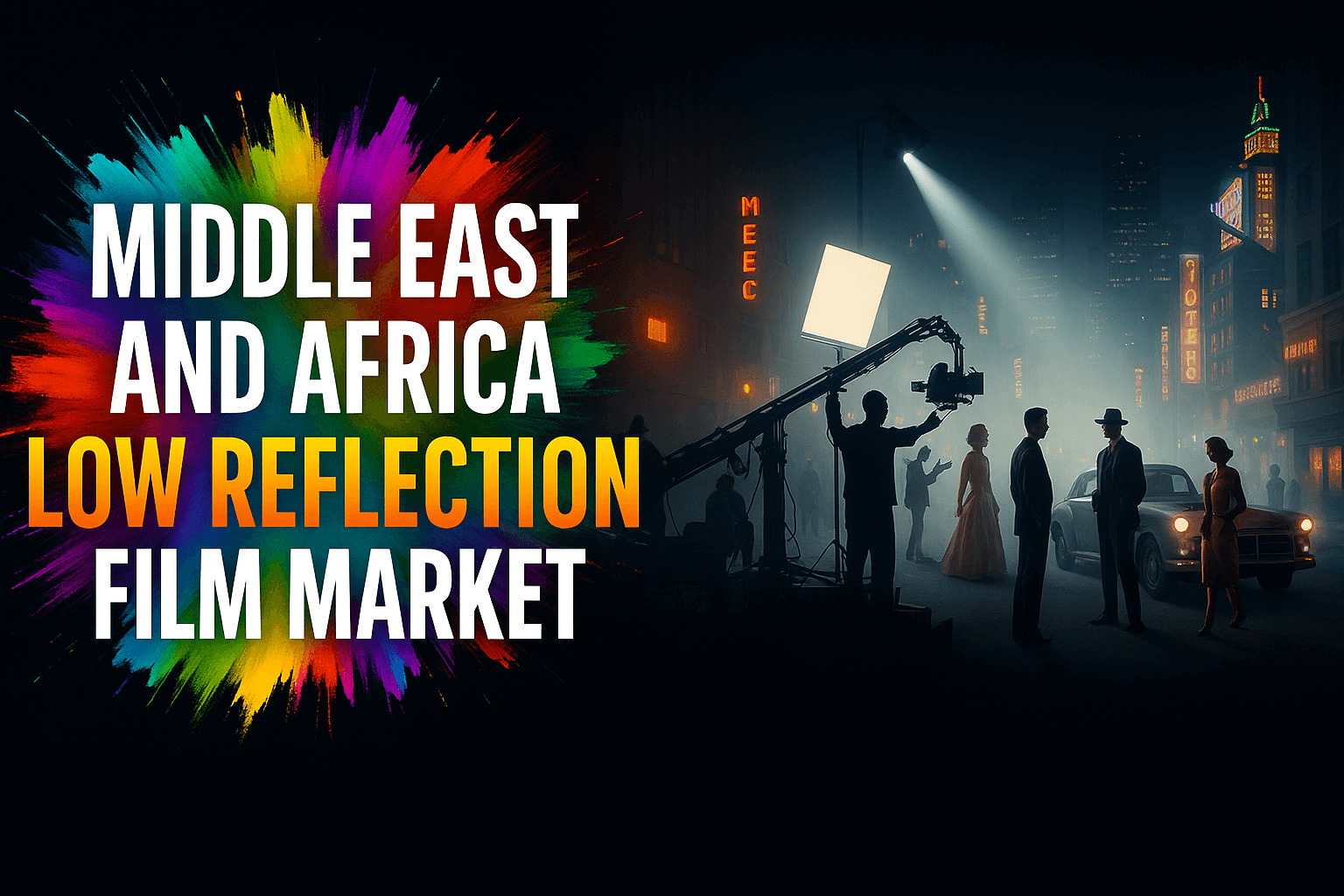Navigating the Middle East and Africa Low Reflection Film Market: A Strategic Briefing

Introduction
The Middle East and Africa (MEA) region is undergoing a significant transformation, marked by rapid urbanization, technological adoption, and a surge in construction and digital infrastructure projects.
From the smart cities rising in the Gulf to the expanding consumer electronics market across the continent, a common thread is the increasing demand for advanced display technologies.
A key component of this shift is the Middle East And Africa Low Reflection (LR) Film Market, a niche but vital segment of the broader materials industry.
Low reflection (LR) films, also known as anti-reflective films, are specialized optical coatings applied to surfaces to minimize glare and enhance visual clarity. While this market may seem specialized, it is directly linked to the growth of critical sectors like consumer electronics, automotive displays, and solar energy.
For executives and investors, understanding the market’s dynamics is essential for identifying strategic opportunities. This article provides a comprehensive briefing on the key drivers, challenges, and growth potential within this burgeoning market.
Key Takeaways
| Core Challenge | The MEA market for low reflection films is fragmented and lacks centralized data, making it difficult for businesses to accurately assess market size, identify key players, and anticipate regional trends. |
| Strategic Solution | Leverage a data-driven approach to market intelligence, focusing on verified data from credible sources to overcome regional opacity and inform market entry or expansion strategies. |
| Vitrina’s Role | Vitrina is an intelligence platform that provides real-time, verified data on global business ecosystems, empowering executives to navigate complex markets and make informed decisions. |
Understanding the Middle East and Africa Low Reflection Film Market
The Middle East And Africa Low Reflection (LR) Film Market is a critical component of the optical films industry, encompassing various anti-glare and anti-reflective solutions. These films are integral to enhancing the user experience and performance of screens and surfaces by reducing glare from ambient light.
The market’s growth is largely driven by a demand for improved visual clarity and energy efficiency across multiple sectors. According to a 2025 report from Research and Markets, the Middle East and Africa Optical Films market is anticipated to grow at more than an 8.11% CAGR from 2025 to 2030, with LR films being a key sub-segment of this growth.
The demand is not uniform across the region. It reflects the duality of highly urbanized Gulf states like the UAE and Saudi Arabia, where there is strong demand for premium optical films in luxury electronics and smart buildings, alongside more populous and developing African economies like Nigeria, where demand is growing but often for different applications.
The market is not just about consumer devices; it extends to architectural applications for buildings and solar panels, reflecting the region’s focus on sustainable construction and renewable energy.
Key Drivers of Market Growth
The growth of the Middle East And Africa Low Reflection (LR) Film Market is propelled by several macroeconomic and technological trends. The rising adoption of consumer electronics, such as smartphones, tablets, and televisions, is a primary driver.
As consumers increasingly demand high-quality displays that are legible in bright sunlight, LR films become essential. This trend is particularly strong in the MEA region due to a large, tech-savvy youth population with increasing disposable incomes.
Another significant driver is the growth of the automotive industry. As cars become more technologically advanced, the demand for digital dashboards, infotainment systems, and heads-up displays (HUDs) is rising. LR films are crucial for these applications to ensure clear visibility and reduce driver distraction. Finally, the region’s push toward “smart cities” and renewable energy is creating new opportunities.
The development of solar panels, interactive kiosks, and digital billboards in public spaces necessitates the use of high-performance optical films that can withstand harsh environmental conditions while delivering clear, readable content. This multi-sector demand demonstrates the underlying strength and diversification of the market.
Navigating Market Challenges and Restraints
Despite its growth potential, the Middle East And Africa Low Reflection (LR) Film Market faces several significant challenges. A major restraint is the limited local R&D and advanced manufacturing infrastructure for these specialized films compared to more developed regions like North America or Asia-Pacific.
This means that many advanced films are imported, which can add complexity and cost to local production. Additionally, the region’s harsh climatic conditions—extreme heat, dust, and UV radiation—require specific film properties that may not be standard in global products, forcing manufacturers to adapt imported films for local use.
Furthermore, the market is highly competitive, and new entrants face challenges in gaining traction against established brands with strong distribution networks.
There is also a lack of standardized data and limited public awareness about the benefits of LR films in some emerging African regions, which can slow market penetration.
Without a centralized source of verified information, businesses often struggle to identify the right partners or understand the true size of the opportunity.
Strategic Opportunities for Stakeholders
The opportunity lies in understanding the nuanced regional demands and forging strategic partnerships. One key area of opportunity is the entertainment supply chain.
As the MEA media and entertainment market grows, with projections of a 9.8% CAGR to USD 70.47 billion by 2030 according to a Mordor Intelligence report, the demand for high-quality displays for cinema screens, broadcasting, and consumer electronics will rise.
This creates a direct need for high-performance optical films. Stakeholders can also capitalize on the region’s focus on sustainability.
The push for green buildings and energy-efficient solar panels creates a clear market for LR films that reduce energy consumption. Identifying local partners with a strong understanding of regional regulations and a verified track record is critical to success.
This requires access to a centralized source of intelligence that can map out the ecosystem and provide a clear picture of who is collaborating with whom.
Conclusion: A Data-Driven Approach to Competitive Advantage
The Middle East And Africa Low Reflection (LR) Film Market is a dynamic and growing sector with significant potential, but it is not without its complexities.
The fragmented nature of the market, coupled with regional-specific challenges, means that success depends on more than just a good product. It requires a deep, data-driven understanding of the landscape, including key players, growth drivers, and strategic opportunities.
Platforms that can provide verified intelligence on companies, projects, and key decision-makers are invaluable for businesses looking to navigate this ecosystem.
By moving from a reliance on guesswork to a foundation of verifiable data, executives can make more informed decisions, mitigate risks, and position themselves for long-term success in one of the world’s most promising emerging markets.
Frequently Asked Questions
Low reflection films are used to reduce glare and reflections on displays and surfaces. They are commonly applied to consumer electronics, automotive displays, solar panels, and architectural glass to improve visual clarity and energy efficiency.
While specific data for this niche market is limited, the broader Middle East and Africa Optical Films market is projected to grow at a significant CAGR of over 8.11% from 2025 to 2030, indicating strong underlying demand for these products.
The market includes major global players with regional operations, such as 3M Company and Mitsubishi Chemical Group Corporation. The competitive landscape is also shaped by local and regional distributors and manufacturers who specialize in specific applications.

























